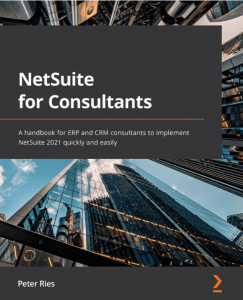Implementing CRMS like Salesforce into an existing company can be really challenging if users aren’t interested in using it or resistant to change. I recall the first time I integrated Salesforce into an organization, we had a very difficult time getting the sales staff to actually use it. Eventually we found a way to get staff interested in using the CRM and stop using Google Docs or Excel sheets.
If you aren’t sure what CRM is, you should take the time and read my Beginner’s Guide to Understanding CRM. Integrating Salesforce into an existing company often fails because of really poor user adoption. Sales and Support staff generally have a strong love/hate relationship with Salesforce and other Customer Relationship Management systems.
Common Reasons for poor Salesforce Adoption
The hatred usually stems from a few different reasons, but these reasons are something can be worked through with taking the time and understanding how staff feel, communicating why it’s being implemented and offering the necessary training.
- The secrecy is often removed: Management now can have a lot better insight into what is happening. Salesforce and other CRMs were put into place to organize Sales and Management – not to benefit at Sales at all.
- CRM systems tend to require frequent updates and additional processes they previously didn’t have to do. This means that the sales or support staff are now spending a very large percentage of their time doing data entry – such as every time a person emails or calls.
- Most Salesforce implementations have a crazy number of required fields that may use validation rules, so there’s no way to really get around them. It’s not uncommon to have dozens of required fields that the Sales person may or may not know on a Lead or Account object which results in them getting frustrated and trying to avoid the CRM altogether.
- Out of the box, Salesforce isn’t really all that user friendly and can require extensive training or customization to make it useful. There are still a very large percentage of workers that are tech savvy. Sales staff are generally people person persons and not interested in interacting with Software or computers.
As you can see, there’s lots of reasons that people outright reject CRM and try and avoid using it. A lot of the rejections come down to a few core issues which will be explained in a lot more detail in this post.
Involve Staff to Increase Adoption
Implementing CRM is usually a management decision that is pushed onto staff without receiving any input from the staff that will now have to work with it. It’s vital that there’s leadership that’s clearly communicating to employees about how the CRM will fit into the company and provide direction. CRM has the potential to help your company change into becoming customer focused and improving sales and margins, but you have to make sure staff are involved and understand what’s going on.
For example, Designing a Proper Sales Process that involves input from your sales team and their managers is one of the most vital parts of gaining user adoption.
Communication
Communicating to end users during the implementation and adoption phases is vital for the system to being used. Communication needs to include things like Timeline, what’s changing (deliverables / what will they see), and finally who is responsible. Those involved in the implementation have to appear to be accessible, and actually be accessible as staff will avoid using the system if there’s a reason to.
Offer Training
The most important part of getting successful user adoption is providing effective training. Effective training encompasses a lot of different things, but I think there’s a few key ways of getting the point across.
Training should primarily be role based and focused on the process not really focused on the technology. Process changes will most likely be what most of the learning needs to be, providing processed training will significantly help. If somebody doesn’t need to be there for that particular training, make sure they aren’t because they’ll be distracting. Don’t be scared to explain why things have been done a certain way.
Make sure training is hands on and ideally using realistic data so there’s no reason for the staff to get caught on unexpected errors such as data validation rules. Provide some sort of “Quick Start Guide” or cheatsheat that users can refer to when they get caught so they can be mostly self-service.
Avoid Doing Frequent Large Changes
Making frequent large changes will cause staff to resist the changes. As we all know, a lot of people avoid taking risks and avoid changes.
A constantly changing system will cause a significant amount of confusion for staff, and changes should be communicated well before hand. If you’re using Salesforce as your CRM it might make sense to have a Chatter Group where your programmers or operations team publishes release notes with a very brief summary. Training should be available for staff either before the changes go live or immediately following. Coordinating this in large companies can be really time consuming, but it’s vital to spend the time and get a release and training process established.
Consider Gamification Solutions
Sales people are often very competitive and consider every sale to be a personal success. Well designed gamification implementations can take advantage of this by highlighting large sales and showing it off to all staff.
Gamification is proven to boost productivity, and encourage adoption by providing motivation and goal tracking.
Consider Automation of Things
Staff are more willing to adopt to additional work if they see a benefit for themselves, for example, if the new system can take some of the really mundane and repetitive tasks out of the sales process they will be more likely to adopt. For example, in Salesforce it’s possible to automatically generate a quote and email it the Primary Contact. I cover how to do this in my blog article How to Sync Quotes
If It isn’t In Salesforce it doesn’t Exist
A lot of companies are now taking an approach of paying commissions based off of the data in Salesforce. Although this feels really heavy handed, it does force sales staff to properly enter data and make sure that everything they are doing is properly documented in Salesforce.
Monitor Staff and Make Sure They Login
If staff aren’t regularly logging into the system, this means they aren’t using the system. If your company has Executive Level buy in, it probably makes sense to audit the user Logins and see who isn’t logging in regular. In Salesforce you can do this by going to the Login History page and then have their manager ask them why they aren’t logging in.




